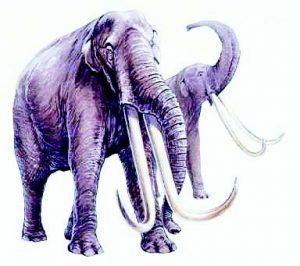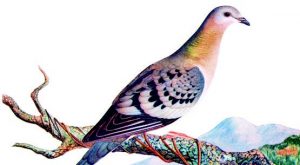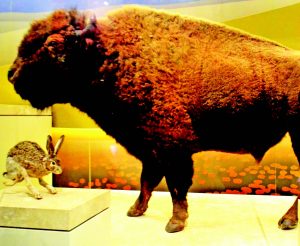When you think of Philippine wildlife, which animals come to mind? Crocs, tamaraw, the Philippine eagle? Well, would you believe that elephants, rhinoceroses, and giant tortoises once lived in our country? The roar of wild tigers even reverberated over the mountains of Palawan!
Paleontologist Sylvio Lopez excavated the molar of a stegodon, an extinct relative of modern-day elephants, between Cagayan and Kalinga Apayao in 1973. In 2008, the University of the Philippines Archaeological Studies Program announced the discovery of tiger bones in Palawan’s El Nido!

As humans rose to dominate life on Earth, many species fell by the wayside. Gone are the wild elephants, rhinoceroses, and tigers of the Philippines.
Extinction is a natural phenomenon, the result of failing to evolve fast enough to keep up with the times, a cataclysm like an asteroid crash, or human intervention. Most plant and animal species last around 10 million years before disappearing. Some lucky ones last much longer. Coelacanths—ancient 6-foot long fish rediscovered in South Africa in 1938 and in Indonesia in 1997—have been in existence for over 360 million years!

What’s worrying is the unnatural rate of extinction. Over 200 species are now disappearing daily. By the time you finish reading this column, another will vanish.
The story of the passenger pigeon, once among Earth’s most common birds, is ominous. A single flock flying above Southern Ontario in 1866 was 1.5 kilometers wide and 500 kilometers long. It would have filled the sky from Manila to Ilocos Norte with birds!
In 1914, just 48 years later, Martha, the world’s last passenger pigeon, was laid to rest. Due to excessive commercial hunting, one of the planet’s most common birds was declared extinct.

The tale of America’s plains bison is similar, with up to 60 million grazing through the plains of North America before white settlers came. In under a century, 99.9% were slaughtered, with only about 500 surviving. Many were killed just for their tongues.
Going Once, Going Twice…
Fortunately, conservation has been proven to work. By protecting their last remaining habitats, even ranching them for commercial purposes, the last 500 plains bison recovered. Today, about 20,000 of them remain in the wild, with nearly 500,000 kept in ranches. It’s a far cry from the vast herds that thundered free across America, but at least they didn’t follow the path of the passenger pigeon.
Our own country is a hotbed for biodiversity, with many species considered critically endangered—just a step above extinction. The tamaraw, Philippine eagle, and Philippine crocodile are all in this very precarious category.
Rampant deforestation, land conversion, coastal degradation, pollution, climate change, disease, and the introduction of foreign species are some of the major causes of biodiversity decline. Fortunately, we have our own version of America’s bison story.
An estimated 10,000 tamaraw—an endemic buffalo found solely on Mindoro—thrived in the early 1900s. The species was decimated by widespread logging and hunting, plus an outbreak of rinderpest contracted from imported cattle. In 1969, tamaraw numbers dropped to less than 100 heads.

Today, due to strong conservation, enforcement, and education efforts between the Far Eastern University, Tamaraw Conservation Programme, nonprofits, and local communities, the population has risen to 401—again, not the 10,000 from a century ago, but still better than being wiped out.
So are we winning the war against extinction? Not yet, but we’re buying our endangered animals time. Someday soon, I hope humanity finds ways to progress without destroying our planet’s natural resource base.
Until then, the dedication of conservation champions and our love not just for animals, but for our home planet will dictate how many species we can take into the next centuries. Conservationist Sir Peter Scott, a founder of the World Wildlife Fund (WWF), said it best: “We shan’t save all that we should like to—but we shall save a great deal more than if we had never tried.”
This appeared in Animal Scene magazine’s February 2018 issue.






